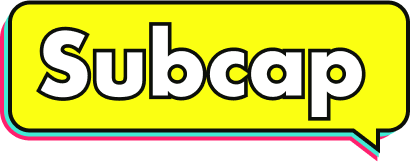
The last thing you want is for your audience to be left behind because they can’t understand what’s happening in your video. That’s why it’s important to include captions. Captions that are easy to read and understand ensure that everyone has the opportunity to enjoy your content, regardless of their hearing ability.
Plain and readable
To create captions that are both accessible and easy to read, you should make sure the text is large enough to read. Another important aspect of captioning is the font itself. You should also use a plain font with mixed case letters (i.e., not all uppercase). Fonts that are easy to read for a wide variety of people are best, so stick with something simple like Arial or Verdana. It’s also important not to use fancy fonts because they may not be legible for those who have vision problems such as dyslexia or color blindness.
Subtitles in blocks rather than one word at a time
Make sure that the subtitle is displayed in blocks rather than one word at a time. A subtitle that is displayed one word at a time will take longer to read than the same subtitle displayed all at once as a block. This option is more readable for those with dyslexia and other reading impairments.
If your captions move or fly, readers can’t keep up. Slow down that movement so everyone gets to enjoy them! A slow pace allows people with dyslexia to catch up and understand the message being conveyed by the captions.
Mixed case letters instead of all uppercase letters
You might be wondering why we’re so adamant about mixed case letters. It’s because they’re easier to read—for everyone. If you don’t believe us, take a look at this chart from the University of Washington:
Uppercase letters are harder to read than lowercase letters, which makes them harder for people with dyslexia and other reading disabilities to process. For example: “a” is a more visually distinct letter than “A.” That’s why it’s easier for most people to read Aardvark instead of AARDVARK.
Accessible captions to be enjoyed more widely by the disabled community
Video captions can be useful for a wide range of audiences:
- People with hearing loss can use captions to follow along with the video, even if they’re watching it in a noisy environment.
- People with cognitive disabilities may not be able to understand spoken language (or at least, not every time), so they may prefer text-only captions.
- If your audience is made up of people who don’t speak your language fluently or at all, then native-language subtitles are an essential accessibility feature that should be included in all videos where possible!
We can all help make the world a more inclusive place by ensuring that we are creating video content that is accessible to everyone. You don’t have to be an accessibility expert to make these changes, but it does take some thought and effort. We hope these tips help you produce captions that are clear, easy to read, and fun for everyone!
